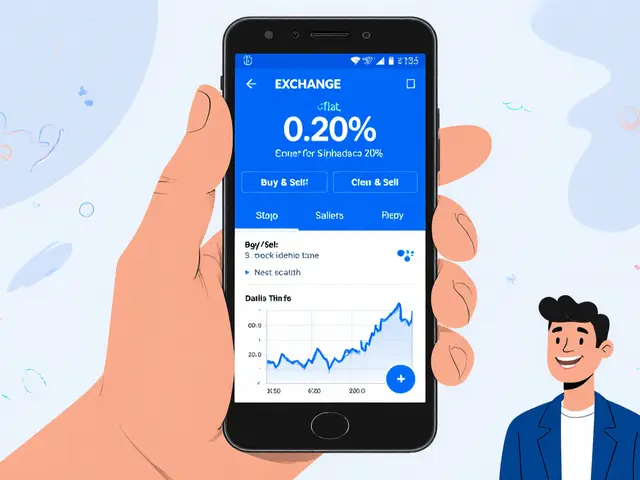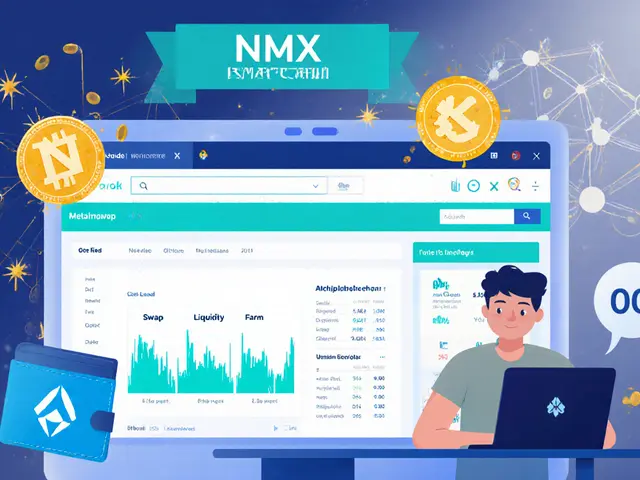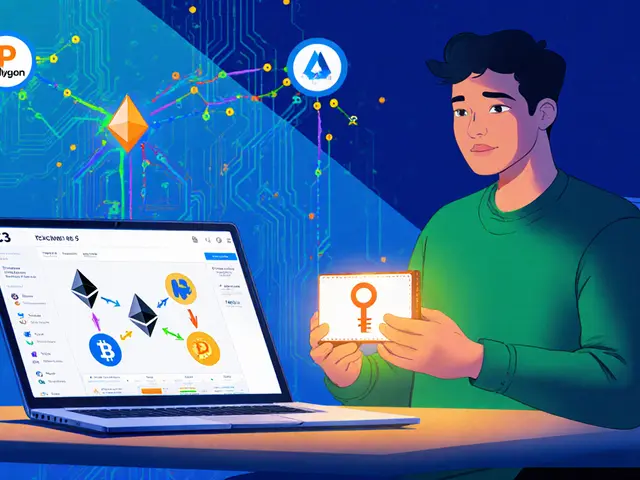CBDC vs Cash vs Cryptocurrency Comparison Tool
Compare Payment Methods
Select your priorities to see which payment method best matches your needs.
What matters most to you?
Governments worldwide are racing to digitise money, but will CBDC truly push cash and crypto into the past? This article unpacks the technology, compares the three payment forms, and weighs the chances of a wholesale swap.
What is a Central Bank Digital Currency?
Central Bank Digital Currency (CBDC) is a digital representation of a nation’s fiat money issued and backed by the central bank. It aims to combine the instant, low‑cost feel of electronic payments with the full reserve backing of cash. Unlike private tokens, a CBDC lives under a single authority, uses regulated infrastructure, and is typically pegged 1:1 to the national currency.
How CBDCs Differ From Cash
Physical notes still dominate everyday life. In 2024, cash accounted for $178 trillion in transaction volume, a 4.2 % annual rise in advanced economies (IMF). Its strengths are anonymity, offline usability, and zero‑tech barriers. CBDCs, however, promise near‑instant settlement, programmable features (e.g., conditional disbursements), and cheaper cross‑border transfers.
Key distinctions:
- **Liquidity:** Cash is unlimited by design; CBDCs rely on central‑bank balance sheets.
- **Access:** Cash works anywhere; most CBDC pilots need a smartphone or a basic card.
- **Privacy:** Cash offers true anonymity; CBDCs can log every transaction, though designs vary on data minimisation.
- **Cost:** A Bahamas Sand Dollar pilot cut processing costs by 90 % compared with traditional banking.
How CBDCs Stack Up Against Cryptocurrencies
Cryptocurrencies such as Bitcoin operate on decentralized ledgers, have no central guarantor, and often experience volatile price swings (60 % swing in 2023). Stablecoins try to bridge the gap by pegging to fiat, but they still depend on reserve assets that can be opaque.
Comparing three pillars side by side makes the trade‑offs clear:
| Feature | CBDC | Cash | Cryptocurrency |
|---|---|---|---|
| Issuer | Central bank | Government (printing) | Decentralised network |
| Price stability | 1:1 fiat parity | Stable | High volatility |
| Transaction speed | 0.5-2 seconds (e‑yuan) | Instant (physical hand‑over) | Minutes to hours |
| Privacy | Variable (design‑dependent) | Anonymous | Pseudonymous |
| Accessibility | Smartphone or card required | Universal | Technical knowledge needed |

Global Adoption Snapshot (2024‑2025)
More than 110 countries are researching or piloting CBDCs. Notable pilots include:
- Digital Yuan (China) - 1.8 trillion yuan processed, 261 million wallets (2023).
- Digital Euro - expected launch 2025, built on existing SEPA/TARGET2 infrastructure.
- Digital Pound (UK) - offline functionality for users without constant internet.
- Sand Dollar (Bahamas) - 90 % adult adoption within two years.
- e‑krona (Sweden) - mixed reviews, 3.7/5 stars on Trustpilot.
In contrast, crypto usage remains skewed toward investment: Chainalysis reports 73 % of Bitcoin transactions are speculative, while stablecoins settle $12 trillion annually but sit under regulatory scrutiny (e.g., SEC vs. Tether).
Pros and Cons of a CBDC‑First World
Advantages
- Instant settlement cuts friction for merchants and remittances.
- Programmable money enables targeted fiscal policies, such as stimulus directly to wallets.
- Reduced cash‑handling costs for banks and governments.
- Potential to boost financial inclusion where mobile phones are widespread.
Drawbacks
- Cybersecurity risk - 78 % of central banks list hacking as their top concern.
- Privacy worries - 41 % of Chinese digital yuan users fear state tracking.
- Infrastructure gaps - 1.4 billion people lack reliable internet.
- Risk of disintermediating commercial banks unless caps are set (e.g., Nigeria’s eNaira limit).

Will Cash Disappear?
Federal Reserve Chair Jerome Powell told Congress in February 2025 that CBDCs should *complement* cash, preserving access for the 5.4 % unbanked households in the U.S. Meanwhile, ECB President Christine Lagarde argued that a fully operational digital euro could make physical notes “obsolete.” The reality is likely a hybrid: cash will stay for anonymity and offline needs, while CBDCs capture the bulk of everyday digital payments.
Will Cryptocurrencies Be Overtaken?
Cryptos excel at borderless, permission‑less transfers and serve as a store of value for some users. Stablecoins already bridge fiat and DeFi, with $160 billion in circulation by early 2025. However, the central‑bank backing of CBDCs offers unlimited liquidity and legal enforceability that private tokens can’t match. Analysts at the Atlantic Council predict that by 2030, CBDCs will cover 25‑30 % of retail transactions, cash 10‑15 %, and private digital currencies (including stablecoins) 65‑70 %.
In practice, the two systems will likely coexist: CBDCs handling routine purchases, while cryptocurrencies remain niche for investment, cross‑border remittances, and decentralized finance.
Key Takeaways
- CBDCs provide a state‑backed digital alternative that is faster and cheaper than cash for many use cases.
- Cash retains advantages in privacy, offline access, and universal reach; it won’t vanish overnight.
- Cryptocurrencies keep their edge in decentralisation and global reach, but face volatility and regulatory pressure.
- Global pilots show mixed adoption - small island nations achieve high usage, large economies lag behind.
- The most plausible future is a layered ecosystem where cash, CBDCs, and crypto each serve distinct roles.
What is the main purpose of a CBDC?
The primary goal is to modernise payment systems-making transactions instant, cheap, and accessible-while preserving the central bank’s control over the money supply.
Can I use a CBDC without an internet connection?
Designs like the UK’s digital pound and China’s e‑yuan include offline payment modes (QR codes, NFC cards) that work when the network is down.
Will CBDCs make cash illegal?
Most central banks, including the Federal Reserve, say cash will coexist with digital money for the foreseeable future, especially for privacy‑sensitive transactions.
How do CBDCs compare to stablecoins?
Stablecoins are private tokens pegged to fiat, reliant on reserve assets that may be opaque. CBDCs are direct liabilities of the central bank, offering unlimited liquidity and legal tender status.
Are CBDCs safe from hacking?
Security is a top priority, but no system is invulnerable. Around 78 % of central banks cite cyber threats as their biggest risk, prompting hybrid online‑offline architectures.












People Comments
CBDCs certainly shake the payment landscape, but I’m wondering how many people actually have the devices needed to use them. The article mentions smartphones or cards, yet a huge rural population still lacks reliable internet. If access remains limited, the promised financial inclusion could be just a slogan. Still, the idea of programmable money is intriguing.
Look, the tech isn’t the problem – the politics are. Everyone acts like CBDCs will magically solve all payment frictions, but you forget about surveillance and the loss of personal freedom 😱. The author glosses over that governments could freeze wallets on a whim. And don’t even get me started on the cross‑border fee myths – they’re already low with existing digital rails. 🙄
When we stare at the gleaming promise of instant settlement, we must ask: at what cost to our autonomy? The article’s optimism feels like a chorus of sirens that drown out dissent. Cash may be old, but it sings a lullaby of privacy that digital coins can’t match. In the end, the choice isn’t just tech – it’s a philosophical crossroads.
People think CBDCs are just another way to pay for coffee, but they’re a surveillance tool in disguise. If you look at the data trails, the state can build a detailed picture of everyday life. Even with offline modes, the back‑end still records every transaction.
Esteemed colleagues, the discourse surrounding Central Bank Digital Currencies warrants a meticulous examination of both their operational efficacy and societal ramifications. While the prospect of reduced transaction costs is undeniably compelling, the attendant implications for privacy and sovereign monetary policy merit equal scrutiny. It is incumbent upon policymakers to balance innovation with the preservation of civil liberties. I look forward to a spirited exchange of ideas on this paramount subject.
I appreciate the balanced view the article offers – it’s good to see both sides laid out. If CBDCs can truly bring banking to the unbanked, that would be a win for many. Let’s hope the implementation keeps user privacy in mind.
It’s morally wrong to push a system that lets governments control every cent you own. 😡 The article should have highlighted that.
There’s a lot to unpack when we talk about CBDCs, and it’s not just about faster payments. First, the underlying infrastructure requires a level of digital literacy that many populations simply don’t possess, which could exacerbate existing inequalities. Second, the centralized nature of these currencies means that a single point of failure could have systemic consequences if not properly secured. Third, while programmable money sounds like a futuristic convenience, it also opens the door to policy-driven restrictions on how you spend your own money. Fourth, the data generated by every transaction could be used for targeted advertising, political persuasion, or even social credit scoring. Fifth, the cost savings touted by central banks often ignore the hidden expenses of continuous upgrades and cybersecurity defenses. Sixth, the legal framework surrounding CBDCs is still evolving, and in many jurisdictions, it’s unclear how existing consumer protection laws will apply. Seventh, cash remains the only truly anonymous form of payment, and its disappearance could erode privacy rights that are hard to replace. Eighth, cross‑border interoperability is still a work in progress, with different nations adopting varying standards. Ninth, the environmental impact of maintaining massive data centers for CBDC operations could offset some of the green benefits claimed over physical cash. Tenth, the transition period could be chaotic, with legacy systems needing to coexist with new digital platforms for years. Eleventh, public trust is not a given; any major security breach could trigger mass withdrawals and a loss of confidence in the financial system. Twelfth, the political implications are profound, as governments could use CBDCs to enforce fiscal policies directly on citizens’ wallets. Thirteenth, the loss of cash could disproportionately affect the elderly and those in low‑tech environments. Fourteenth, the role of commercial banks may shift dramatically, possibly reducing their influence on credit creation. Fifteenth, the global financial landscape could become even more fragmented if major economies adopt incompatible CBDC models. Lastly, despite all these challenges, the potential for inclusive financial services cannot be dismissed outright, and with careful design, some of these concerns could be mitigated.
Oh great, another "miracle" that will solve all our problems. Sure, if you love being watched 24/7.
Luv the idea of fast paymnts, but wtf about privacy? I mean, do we really want the gov to see every coffee purchase? 😂
Wow, the article really blew my mind! I never thought about how programmable money could actually give your grandma a stimulus check instantly. It’s like sci‑fi meets everyday banking.
Our nation’s sovereignty cannot be compromised by foreign digital currencies. A domestic CBDC should reflect our values and protect our people.
From a payments architecture perspective, the settlement latency improvements are significant. However, the API standardization across jurisdictions remains a major hurdle. Developers will need clear SDKs to integrate CBDC wallets seamlessly into existing apps.
This whole CBDC hype is just a smokescreen for deeper government control. They’ll use the “efficiency” narrative to justify eroding freedoms. Wake up, people!
Look, I’m not saying CBDCs are perfect, but they could reduce transaction fees for small businesses. Also, the offline functionality mentioned could help in areas with spotty internet. That said, we need strong legal safeguards to protect user data. Keep an eye on the regulatory developments.